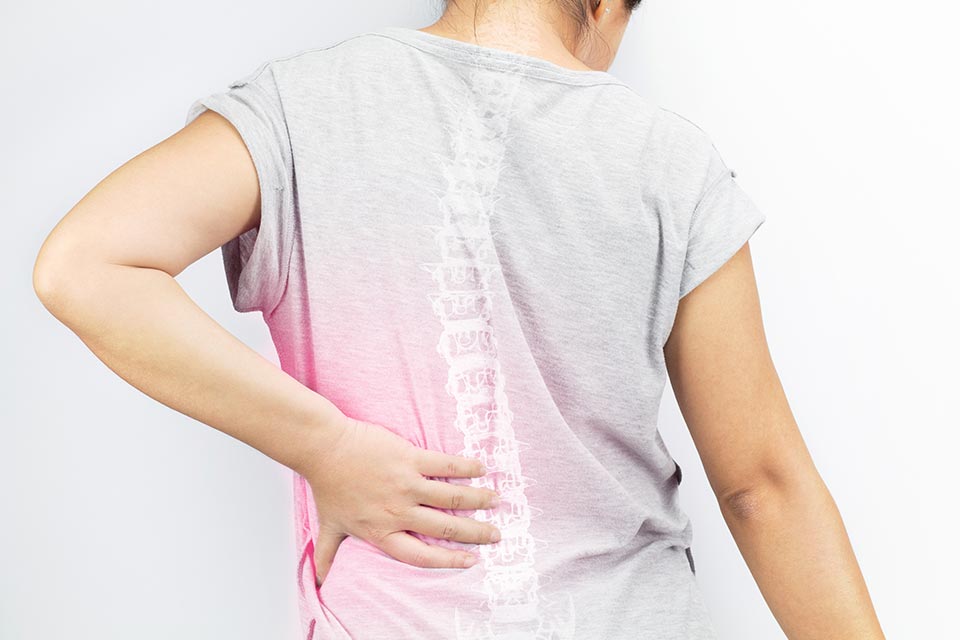Women’s Health: Your Osteoporosis Risk
by The Centers For Advanced Orthopaedics
Osteoporosis weakens bones, making them more susceptible to sudden and unexpected fractures. The disease often progresses without any symptoms or pain and is not found until bones fracture. You can take steps to prevent this disease with good nutrition and an increased emphasis on exercise and preventive medicine. The first step is asking your CAO provider if you are at risk.

Osteoporosis - What You Need to Know
Women are at greater risk for developing Osteoporosis. At present there are some twenty million women affected by osteoporosis. Our changing lifestyle also plays an important role. The main offenders are jobs requiring more mental than physical activity, a decrease in dairy product consumption, and an increase in the number of women who smoke.
What is osteoporosis?
In order to answer this question, we first need to discuss; what is a healthy bone? Structurally, there are two types of bone: a hard thick outer shell, called cortical bone, and a thin delicate internal honeycomb, called trabecular bone. The long bones of the body are primarily made up of cortical bone, whereas the bones of the spine, head of the femur (hip) bone, and the small wrist bones are predominately trabecular. Your bones contain the body’s reservoir of calcium. Bones are continually being absorbed and replaced, and for most of our lives a healthy balance exists. After age forty, resorption begins to exceed formation, resulting in bone loss. This process accelerates with the loss of estrogen during perimenopause. Estrogen normally helps facilitate the transfer of calcium into the bone. Perimenopause, with its associated decline in estrogen levels, makes it more difficult for calcium to enter the bone. Trabecular supportive bone seems to be more sensitive to falling estrogen levels. In fact, during the first twenty years after menopause, there is a 50 percent reduction in the body’s total trabecular bone content. This bone loss is accompanied by a 30 percent decrease in cortical bone. The bones of the spine, hips, and wrist are the most affected ones. With the loss of internal support, bones become brittle and break easily. Not all of the reduction in bone mass is due to estrogen loss, but it accounts for approximately two-thirds of the bone loss.
What does all of this mean to you?
Many times, bone loss translates into pain, bone weakness, and also accounts for approximately 40,000 deaths annually. Indeed, 25 percent of women over seventy show some evidence of crush-type fractures in their vertebrae (spinal bones). This leads to a leaning-forward appearance caused by a “hump” deformity of the spine. Accompanying this may be considerable pain. Hip fractures due to osteoporosis begin to occur ten to fifteen years after menopause. Unfortunately, this process frequently is not diagnosed until after a fracture occurs. On a positive note, this process is totally avoidable with planning.
How can you tell if you have decreased bone density and are at risk for osteoporosis?
To test for osteoporosis, there is special X-ray called a DEXA scan (Dual Energy X-ray Absorptiometry). It takes only a few minutes to perform and is non-invasive. Standard X-rays do not provide early assessment of fracture risk and are of no use. In fact, 30 percent to 40 percent of the bone density must be lost before a change is seen on standard X-rays. The DEXA scan, on the other hand, can detect much smaller amounts of bone loss. It has been recommended that a woman have a baseline (initial) study between the ages of forty-five and fifty. A follow-up DEXA scan can then be done approximately 12 years after your last period. Treatment plans may then be tailored to allow for the amount of bone loss present. A significant decrease in bone mass obviously would require a more aggressive treatment plan.
We want every patient to know their risk factors associated with this silent disease. Prevention is key. The specialists at CAO make your long-term bone and muscle health top priority. Ask your CAO provider what steps you need to do today to take action. Visit cfaortho.com/locations to find a provider or convenient location near you today.

